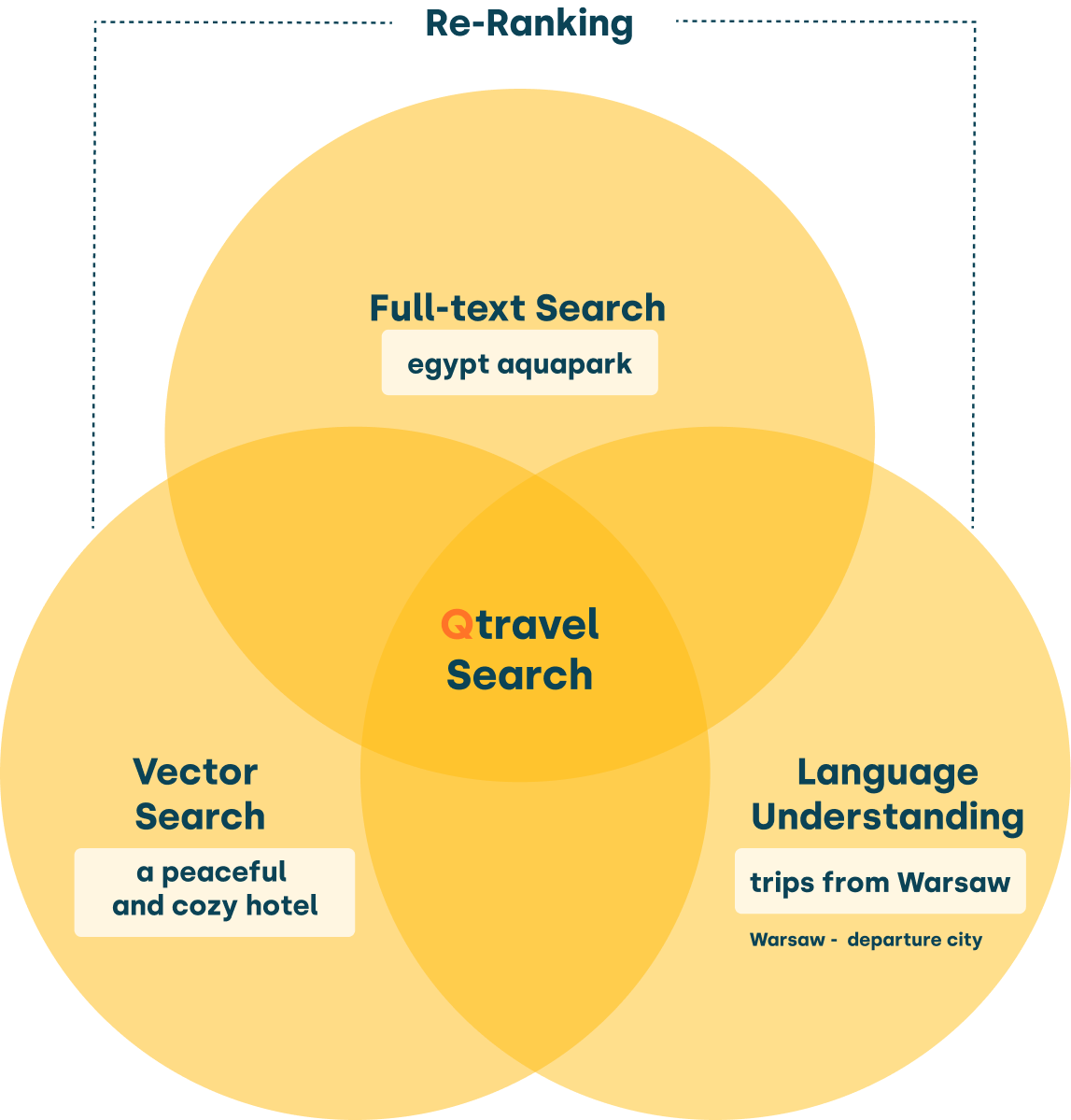Getting Started
Qtravel.ai is the first-to-market Search & Discovery platform for travel that provides next-generation search solutions based on artificial intelligence.
You can explore how Qtravel Search & Discovery Platform works with example data. Sign up or, if you have an account, just log in.
Qtravel.ai provides tools that:
- Allow you to build fast and relevant search for travel offers
- Customize search results based on user behavior on your sites and applications
- Optimize and adjust search results based on your business needs
Qtravel Search combines advanced search solutions that integrate full-text and vector search with artificial intelligence models for extracting information and ranking search results based on user behavior. It understands the intent of travelers by analyzing the meaning of their queries.

Full-text search
A search method that allows searching text (such as user queries entered into a search engine) within text documents, considering word variations, spelling errors, and synonyms. This type of search is often implemented using full-text search engines like ElasticSearch, OpenSearch, Solr, and others, but it can also be an additional functionality of databases. One of the most important features of full-text search is building a list of search results based on the relevance of a document. This relevance is a numerical value that indicates how well a given document "matches" the user's query. In search engines, document relevance is calculated using specialized algorithms such as TF/IDF or BM25.
Vector Search
A search method that uses numerical representations of data, known as vectors, to index data and perform queries. It is particularly effective for unstructured data such as text or images because it understands the context of the data. Vector search transforms the user query and text data (e.g., the content of a travel offer) into vectors that contain information about their features. The search involves comparing the query vector with the vectors of the offer text and finding the most similar vectors. The distance between vectors, determined by metrics such as Euclidean or cosine distance, indicates the degree of similarity between the query and the offer text.
Information Extraction
Information Extraction (IE) is the task of automatically extracting structured information from unstructured text documents, often using natural language processing (NLP) techniques. One of the main tasks of IE is Named Entity Recognition (NER) - recognizing known entities in the text, such as names of places, people, companies, temporal expressions (e.g., dates), or other types of numerical expressions (e.g., monetary costs).
Re-ranking Search Results
Re-ranking Search Results is the process of reordering search results to improve the ranking of results returned by the initial user query. The initial search results may have lower relevance and may not fully reflect the user's intent. Machine learning techniques, such as Learning To Rank algorithms, are used for this purpose. These algorithms rank results based on various factors, such as user behavior on the website, content similarity, or business metrics like CTR (Click-Through Rate).